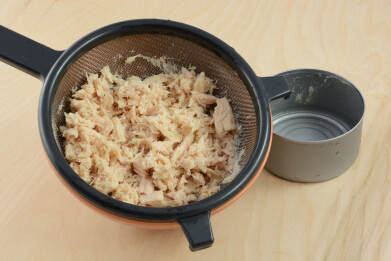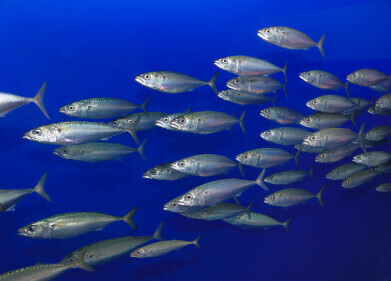Food safety testing
Half of tinned tuna in Europe contains high levels of mercury, says NGOs
Nov 06 2024
Environmental NGOs Bloom and Foodwatch have sounded an alarm over dangerously high levels of mercury in canned tuna across Europe, calling it a “colossal risk to public health.” Their investigation found that over half of nearly 150 cans sampled from five European countries contained mercury levels above the threshold for other fish species, leading to concerns about the implications for consumer health, particularly for vulnerable populations like children and pregnant women.
High mercury levels in canned tuna across Europe
In an 18-month study, Bloom and Foodwatch analyzed canned tuna from Germany, the UK, Spain, France, and Italy, discovering that 57% of the cans had mercury levels exceeding 0.3 parts per million (ppm), the limit applied to other fish. Currently, the European Union sets a higher limit for tuna at 1 ppm, which critics argue was influenced by tuna industry lobbying in the 1980s and 1990s. According to Bloom, this standard prioritizes the sale of mercury-laden tuna over public health. The European average consumption of tuna is around 2.8 kg per person annually, much of which is canned. Bloom points out that the canning process can concentrate mercury, doubling or even tripling the levels compared to fresh tuna.
Health risks of mercury exposure
The health implications of mercury exposure are well-documented. The primary toxic form, methylmercury, is a neurotoxin with the potential to impair cognitive development, especially in fetuses and young children. The World Health Organization (WHO) warns that methylmercury exposure can disrupt brain development during fetal life and early childhood, leading to cognitive and motor deficiencies. Long-term low-dose exposure also raises the risk of cardiovascular and kidney issues, vision problems, and, in extreme cases, may contribute to cancer development.
According to Dr. Philippe Grandjean, a professor of environmental medicine, mercury’s neurotoxic effects make it especially harmful for brain development. “Mercury is definitely a neurotoxin,” Grandjean explains, highlighting its particular danger to developing brains. Pregnant women and young children are therefore particularly vulnerable to mercury exposure, which can lead to long-lasting developmental issues. Methylmercury accumulates in organisms over time through a process called bioaccumulation, making tuna and other top predators such as sharks and swordfish especially susceptible to contamination.
Why is tuna so contaminated?
Mercury is introduced into the environment both naturally, through volcanic eruptions and wildfires, and via human activities such as coal burning, waste incineration, and fossil fuel combustion. Once it enters oceans, mercury can be transformed by microorganisms into methylmercury, a highly toxic compound that accumulates in the tissues of marine organisms. Since tuna are apex predators, they consume smaller fish that may also contain mercury, leading to a concentration of the toxin in their systems. This cumulative contamination presents a major risk for humans who consume tuna, as it can accumulate in the human body over time.
Campaign for stricter regulations
In response to the findings, Bloom and Foodwatch are campaigning for European authorities to adopt more protective mercury limits for tuna. The NGOs advocate for a reduction in the current threshold from 1 ppm to 0.3 ppm, aligning it with other fish species. Additionally, they have called on retailers to stop selling products that exceed this proposed limit and have launched a petition targeting major European retailers, including Carrefour, Aldi, and Lidl, to urge them to take action.
Foodwatch France CEO Karine Jacquemart criticized the current standards, arguing, “What we end up with on our dinner plates is a colossal risk to public health that’s not considered seriously.” The NGOs are pushing for tuna products to be removed from schools, nurseries, maternity wards, hospitals, and care homes to protect vulnerable populations.
Regulatory response and challenges
The European Commission defends the current mercury standards, explaining that maximum levels are established based on the actual occurrence of mercury in foods. They argue that lowering the limit further could disrupt the food supply. “The maximum levels for mercury in food are established on the basis of the data we have on the actual, real-life occurrence of mercury in food,” the Commission stated, highlighting their commitment to keeping levels “as low as reasonably achievable.”
Despite the Commission’s response, Bloom and Foodwatch argue that regulatory inertia and the influence of industry lobbies have allowed mercury-laden products to remain on the market for decades. They maintain that the higher mercury threshold for tuna is not based on health considerations but rather on ensuring the viability of the tuna industry.
A call for consumer awareness
With millions of Europeans consuming canned tuna regularly, often unaware of the associated risks, Bloom and Foodwatch emphasize the importance of consumer education and policy change. The ongoing campaign aims not only to reduce mercury limits but also to inform the public about the risks posed by high-mercury foods.
As the campaign gains traction, it raises important questions about the balance between industry interests and public health, highlighting the need for updated food safety standards to protect consumers from the dangers of mercury exposure in canned tuna.
Digital Edition
IET 35.2 March
April 2025
Air Monitoring - Probe Sampling in Hazardous Areas Under Extreme Conditions - New, Game-Changing Sensor for Methane Emissions - Blue Sky Thinking: a 50-year Retrospective on Technological Prog...
View all digital editions
Events
Apr 21 2025 Shanghai, China
Apr 22 2025 Hammamet, Tunisia
Apr 22 2025 Kintex, South Korea
Analytica Anacon India & IndiaLabExpo
Apr 23 2025 Mumbai, India
Apr 23 2025 Moscow, Russia



















